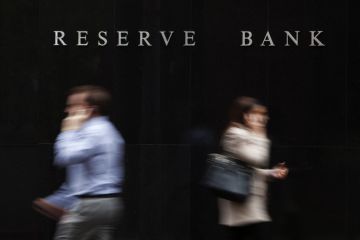Australia's big banks have had another bad year, but with little benefit to consumers

After another horror year for Australia’s major banks, consumers may wonder when they will see any benefit from all the scrutiny of our financial institutions.
Yes, mortgage rates are at historic lows – but they would have been anyway, with the Reserve Bank slashing the cash rate in a bid to boost the sluggish economy.
Otherwise, experts say there has been little meaningful change, so far, for mortgage holders or first-home hopefuls in the wake of the financial services royal commission’s final report, a series of high-profile court cases and shocking allegations of money laundering-related breaches.
“At this stage, Australians are justifiably frustrated at Australia’s big banks,” Choice policy and campaigns adviser Patrick Veyret told Domain.
“There’s been scandal after scandal, which has shown the banks don’t care about their customers and community and only care about short-term profit.”
Many savers and borrowers have turned away from big banks to smaller ones in response, Mr Veyret said – an assessment echoed by other consumer advocates in the sector.
“A lot of the best [mortgage] rates are with the smaller lenders, and so we think this is really good for competition and consumers,” he said.
“Not only home loans: we’ve seen even with savings accounts, personal credit cards, people are looking for a better deal.”
The banks themselves are under pressure from a weak economy that affects inquiry for loans, UBS analyst Jonathan Mott wrote in a recent note to clients. “[We] remain very cautious. We expect the earnings downgrade cycle to continue,” he said. He does not recommend investors buy major bank shares.
Even so, home loans from the big four are on offer with historically low interest rates – higher than their junior rivals, but much less than previous generations paid.
Morningstar banking analyst Nathan Zaia argues banks have passed on more of the official interest rate cuts to borrowers than they may have without all the recent scrutiny.
“In a normal environment where banks’ earnings have come under pressure, they typically would resort to flexing pricing power,” he told Domain.
“But under the spotlight of regulators and government, and competition intensifying as the majors dealt with reviews of lending processes and standards, this hasn’t been achievable.
“As a result, standard variable rates have reached all-time lows, which is great for home borrowers.”
Some consumer groups aren’t satisfied that it’s enough.
Canstar group executive of financial services Steve Mickenbecker says the historically low home loan rates on offer at big banks would have happened anyway, given the state of the interest rate cycle.
“For big banks to be offering those rates is unprecedented,” he said.
“Has that been because of the royal commission? I think it’s more the cycle and the competitiveness of the market.
“I suspect that even if there had been no royal commission, they’d have been under the microscope every bit as much.”
On average, the big four banks have cut standard variable mortgage rates by only 57 basis points this year, Finder insights manager Graham Cooke said. This compares to a 75 basis point drop in the cash rate.
“So they have kept a fair proportion for themselves,” he said.
This feeds into consumers’ interest in junior banks. Finder’s consumer sentiment tracker survey found 72 per cent of respondents trusted the big banks, rising to 90 per cent for small lenders, in a survey of 7000 people over the seven months to November.
Of course, low home-loan rates are only on offer once borrowers can get their loan approved – a process that has become harder in the wake of the royal commission.
Stories have emerged of borrowers facing questions over their UberEats habit or their Netflix subscriptions.
The crackdown came after high-profile cases of borrowers being granted unsuitable loans they could not afford to repay, with bankers becoming more cautious about checking actual expenses.
This has been a frustrating process at times, and not without controversy.
Someone may be spending a lot on UberEats now, the argument goes, but surely they could just cut down once they have to make large mortgage repayments?
That was the view taken by a Federal Court judge in a landmark court case looking at whether Westpac breached responsible lending laws when it used a modest benchmark to estimate borrower expenses, rather than reviewing actual spending.
“I may eat wagyu beef every day washed down with the finest shiraz but, if I really want my new home, I can make do on much more modest fare,” Justice Nye Perram ruled. The corporate regulator this month released new guidance to clarify responsible lending laws.
Canstar’s Mr Mickenbecker is unconvinced that tighter lending processes will help, given Australians have traditionally been good at repaying their mortgages.
“Write-offs in home loans have been historically very low,” he says. “We are better repayers than we are savers – it’s human nature.
“The acid test will come when interest rates start to move up … that’s when we’ll find out if the banks were too lax in the lead-up to the royal commission.”
It could be helpful for those few consumers who have been granted loans they would genuinely struggle to repay, as Choice’s Mr Veyret points out.
“At Choice, we hear numerous examples of people who have been sold into unaffordable loans,” he said.
“Often it comes in a constellation of debts: it will be maybe a mortgage and personal loan and credit card debt and maybe Afterpay debt.”
He cites one couple sold into an interest-only loan by a mortgage broker who did not explain the details. Once five years elapsed and it transitioned to principal and interest, it was “exceedingly difficult” to repay.
Mortgage brokers have been another hot topic, but consumers are still waiting to see change.
At the moment, mortgage brokers are required only to arrange a “not unsuitable” loan.
A bill to make brokers act in customers’ best interests is now before federal parliament.
And a royal commission recommendation to make consumers pay for mortgage brokers’ services, instead of banks paying brokers for making loans, has been deferred, with a review planned for 2022.
“A best interests duty will increase competition,” Mr Veyret said, urging the Treasurer to introduce such a law.
Mortgage Choice chief executive Susan Mitchell also backs a best-interest duty, saying it will offer “more transparency [and] greater opportunity to compare options”.
“Consumers will have specific, detailed evidence of the basis for the broker’s recommendation, which can only be a good thing,” she said.
The flip side of low interest rates on home loans is small, and falling returns offered to savers.
Mr Mickenbecker is doubtful that scrutiny of the big banks has done anything to make their savings rates more competitive.
“Banks haven’t changed their pricing approach,” he said.
“Yes, they’re under scrutiny, but they’re really making business decisions they feel they have to do in a low-interest-rate environment.”
Consumers of other financial products may see more change than borrowers and savers – superannuation and financial advice have been other key areas of focus.
After the fees for no service scandal, banks have been remediating customers for incorrect charges, as the Australian Banking Association notes.
“The industry said they’d repay every cent, and at the most recent count, Australia’s banks have now put aside $7 billion to customers wrongly charged,” ABA chief executive Anna Bligh said in a statement to Domain.
“Australia’s banks are working day and night to make the changes needed following the royal commission.”
She noted the new banking code of practice, an end to unsolicited credit card limit increases, the end of commissions charged on lenders mortgage insurance, and the plans in place for customers to use their own data to look for a better deal.
Finder’s Mr Cooke sees a benefit from the horror year of the big banks, but not one that’s on offer from the big banks themselves.
“It’s beneficial that this industry has had its dirty laundry exposed so people can be more aware of it,” he said. “This conversation that’s happening constantly has really highlighted the alternatives to the big banks.”
We recommend
What are the predicted interest rates for 2025?
Dexus takes heart from rate cut
We thought you might like
States
Capital Cities
Capital Cities - Rentals
Popular Areas
Allhomes
More










